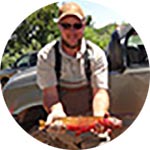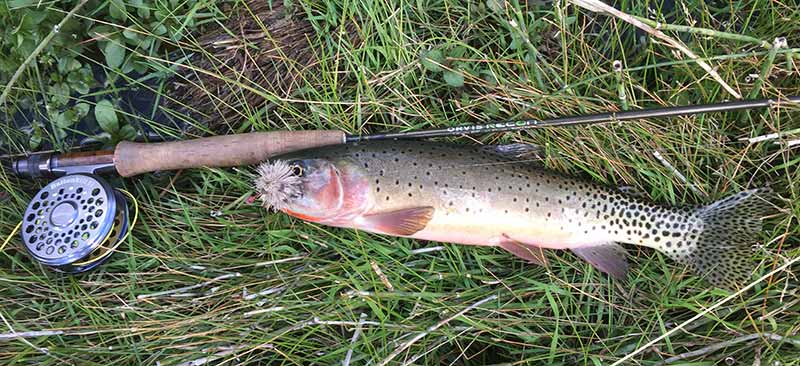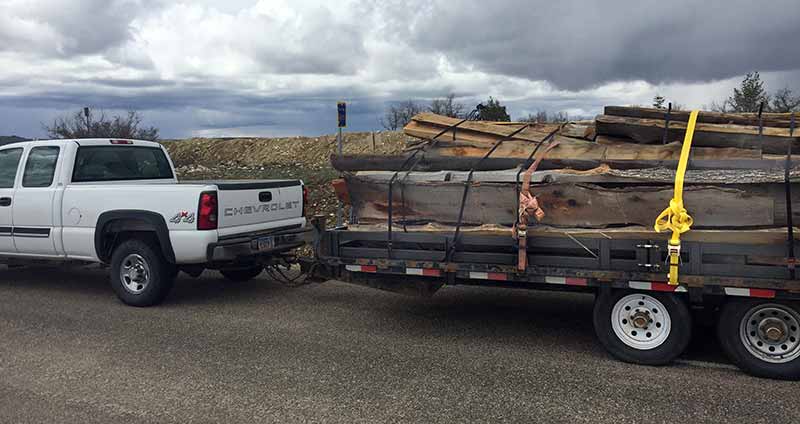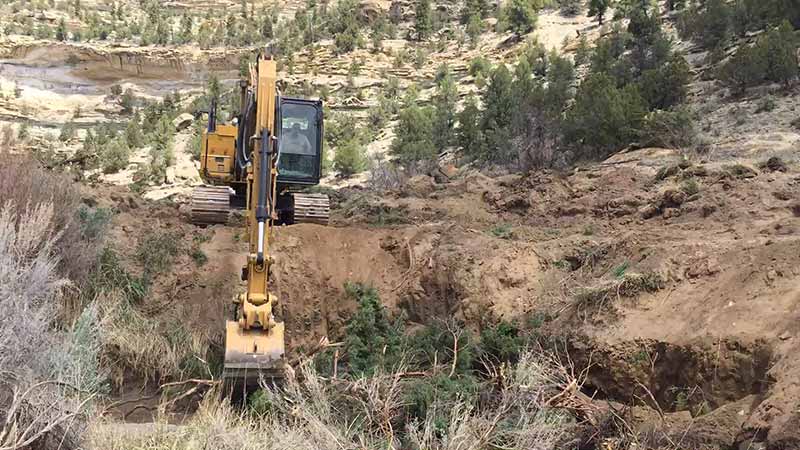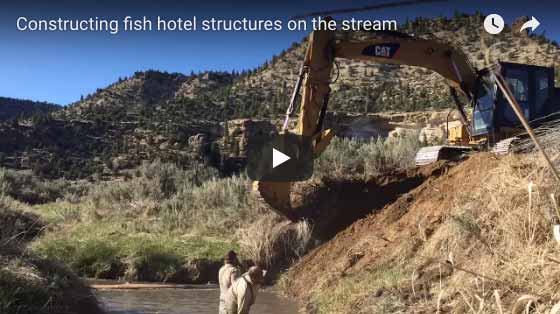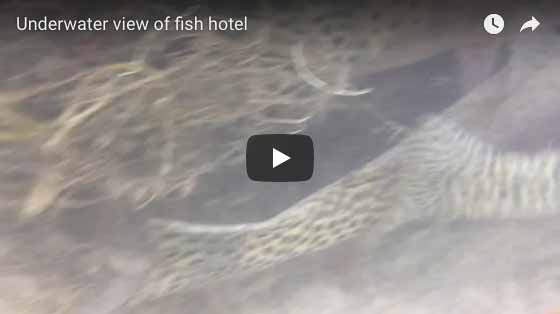Transforming desert landscapes
The art of making a destination fishery
By Bryan Engelbert
Cutthroat fish biologist
MOST UTAH STREAM and trout anglers seek to satisfy their fishing itch on summer weekends by driving to some picturesque little mountain lake or stream shaded by large conifers and aspen. Or perhaps you are utilizing one of Utah's several popular large tailwater trout fisheries.
— Story continues below photos.
Green or Provo River, anyone?
These anglers might be just a few of thousands to grab their five weight and pitch a floating caddis imitation capped above a sinking zebra midge. Sometimes they're bumping shoulder to shoulder with neighbors, pitching the same fly to the same fish as three other people.
Does this sound like you? Did you know that there may be something even more exciting out there?
Many Utah anglers miss the potential of what small, desert streams can provide. These fisheries may be a four-hour drive to literally the middle of nowhere, but they can and perhaps should be your next fishing destination.
Desert fisheries in Utah may be lacking in water, but the fish are big and the visitors are few. Trout tend to get very large in Utah's deserts due to the high productivity (i.e., nutrients) in the streams coupled with a very long growing season than what the mountains afford. This longer growing season also translates to a longer fishing season for the angler.
This blog post is inspired by one such place out in the middle of nowhere in Utah's Book Cliffs area where the DWR has spent time renovating the stream to provide conservation habitat for Colorado River cutthroat trout.
Completing habitat projects is a relatively minor component of my job. I'll give it this though: the task is one of the most physical components about being a fishery biologist. Despite that stream habitat projects are physical and can be a menace to plan and prepare for, they are by far one of the most rewarding to see completed.
And for those of us who pitch flies, it is even more rewarding to fish your renovated stream. Our Book Cliffs stream project excels in all of these criteria. Many people ask, "What kind of things do you do to make good trout habitat?" Well, biologists have a fairly large tool bag. While not every one of those tools are useful, many can be used. I believe Dave Rosgen says it best when he says "Your job is to help the river be what it wants to be." Tools such as streambank stabilization, decreasing or eliminating soil erosion, increasing stream habitat complexity, increasing stream and riparian vegetation, decreasing streambank trampling, providing spawning habitat, providing overhead fish cover, eliminating pollution sources just to name a few. Even with these, there may be several ways to accomplish the same objective.
Biologists are ever looking for more ways to let nature do the work for us. Not only can it be cheaper and self-maintaining, but save us from years of permitting and maintenance hassles. An example that the DWR has been working with for increasing fishery habitat and diversity is with beaver restoration rather than simply completing heavy equipment modifications to a stream.
— Story continues below videos.
In our Book Cliffs stream project, we took a very small stream (0.5 cubic feet of water per second, or CFS) and completed fish spawning habitat additions, reconnected lower and upper portions of the stream for increased fish passage and water availability, increased overhead stream cover, diversified the habitat complexity, decreased the number of erosive banks, incorporated natural streambank stabilization structures and planted and protected riparian vegetation for future shading and soil stability.
Pictures are worth a thousand words when it comes to describing this work. These additions — coupled with the natural positive characteristics of this stream — have led to a very fun fishery. This stream now boasts more than 600 fish per mile and has several fish growing over the 18-inch mark. Due to the lack of fishing pressure, or what I call "education," these fish will take about anything.
One late-September 2017 day, I hooked up with more than 100 fish in three hours. On a floating mouse pattern. It was surreal.
While the fishing was fantastic, so were my surroundings. This country is engorged in sandstone canyons filled with wildlife and history. On any given day, you can find herds of elk, mule deer, bison or wild horses utilizing the stream. The area also has numerous Native American petroglyphs and pictographs nearby. Many of these artifacts are pristine and have been viewed by very few, if any post-colonization people. If you're of a geologist mindset, fossils can be readily found along the canyon walls.
Bottom line: the area has everything for anyone who is an outdoors enthusiast — except for a river rafter.
